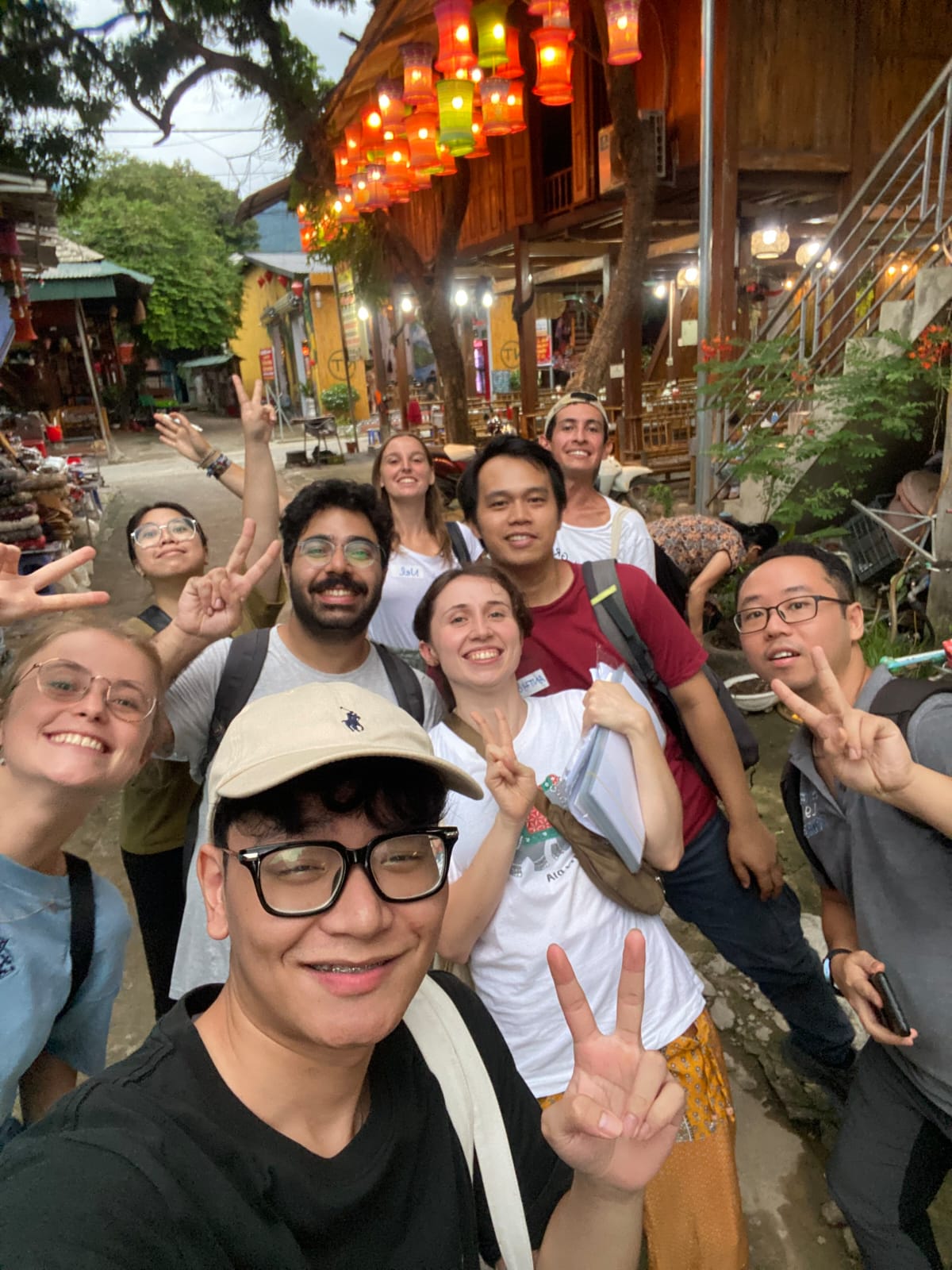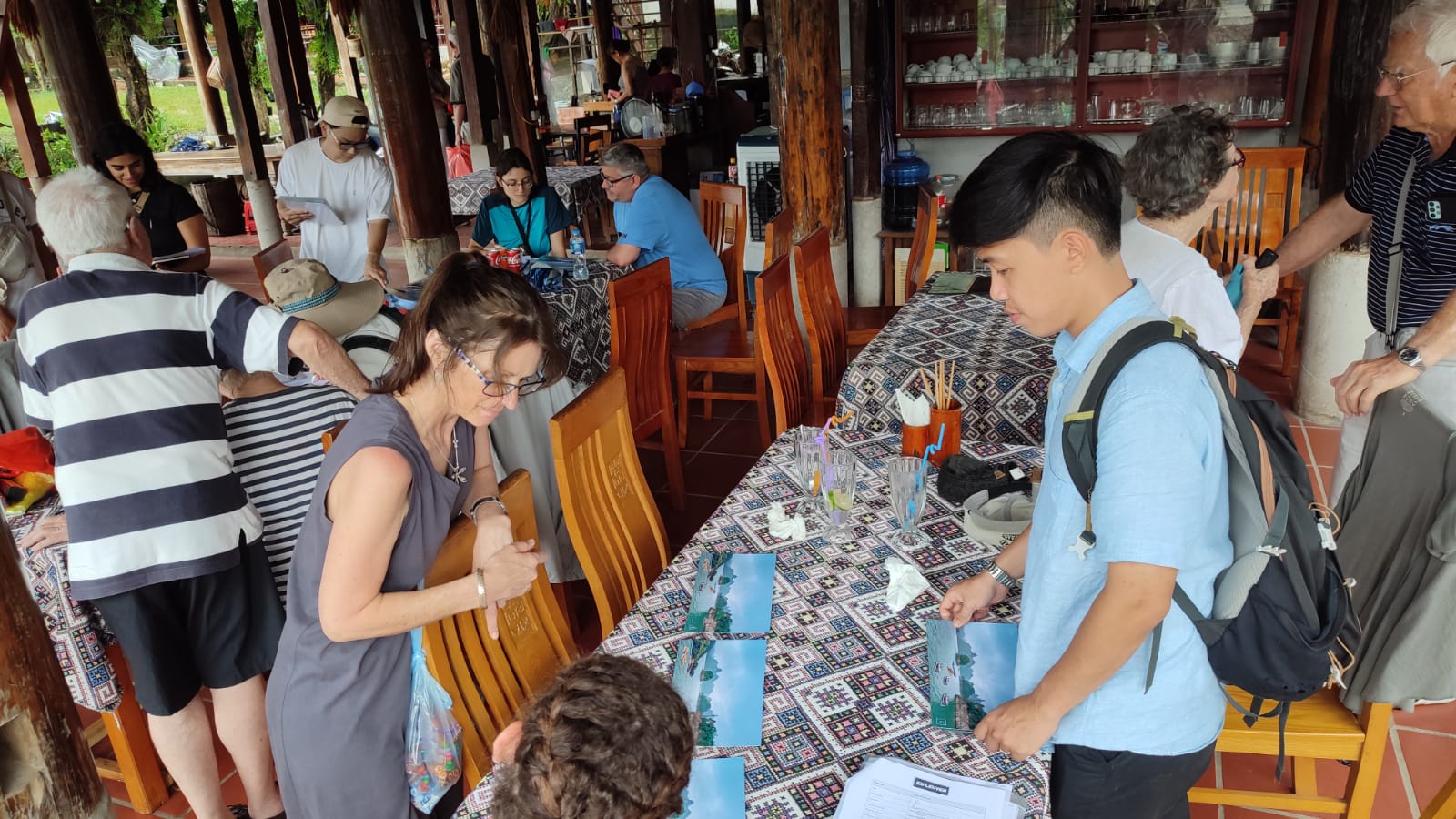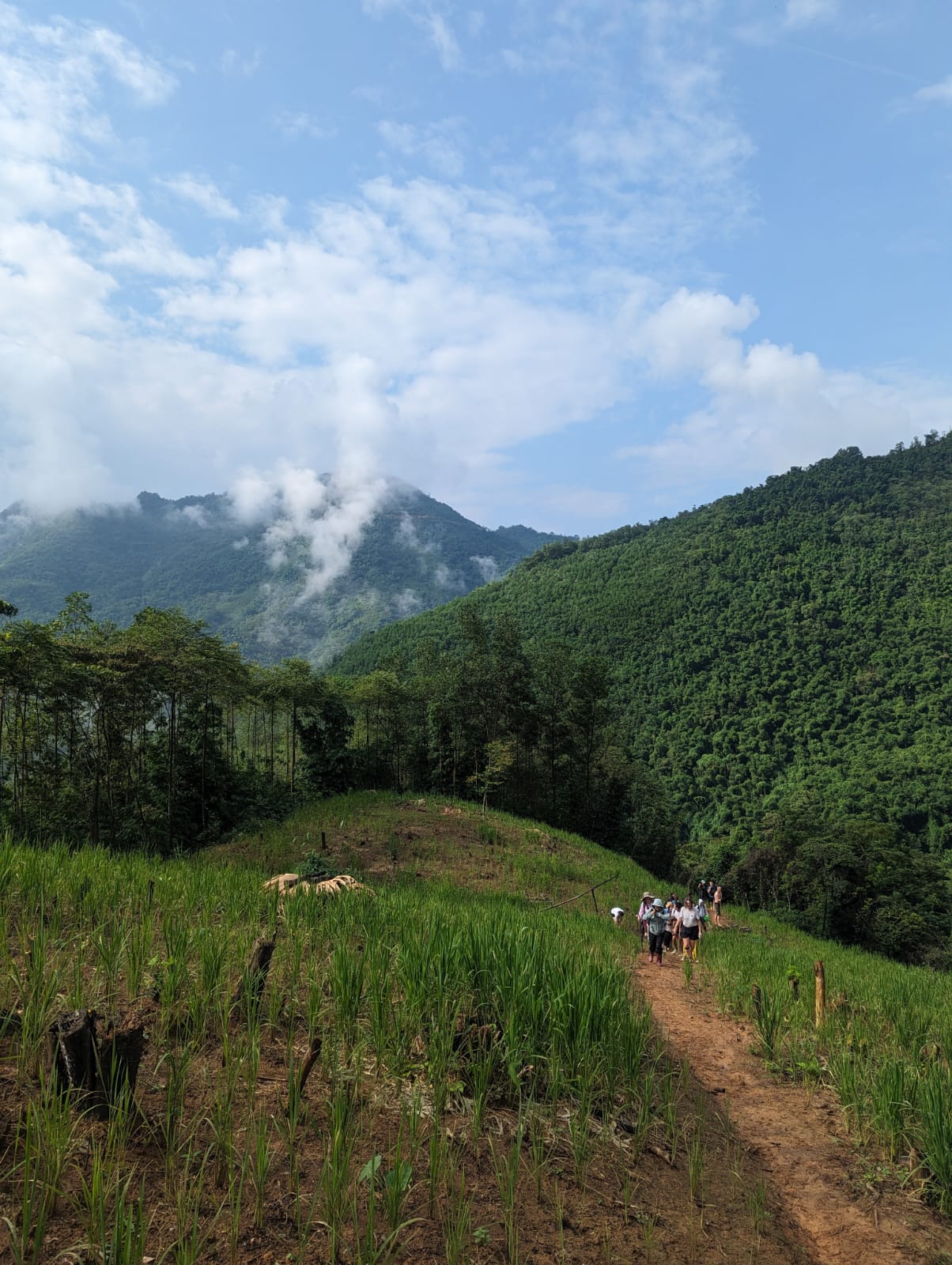The Wonderful Complexity of Researching Tourism Governance in Hoa Binh
By Amanda Chi, Louna Dayekh, Hanne Dernau, Chloé Ledune, Muthia Evirayani
ICP Sustainable Development Program
Expectations when going to Vietnam
Travelling abroad brings a lot of excitement, stress and anticipation and this trip was not an exception. Going to Vietnam brought expectations of encountering adventure, nature and (of course) amazing food. Arriving in Hanoi fulfilled two of these. First, the sense of adventure (try not to feel a rush when crossing a street in Hanoi) and second the amazing food (try not to feel a rush when eating an authentic Phõ). The third expectation came to life when we jumped on a bus to the Hoa Binh province, just a few kilometres away from Hanoi. You could already feel like you were diving into a National Geographic documentary. Beautiful landscapes, breathtaking mountains, and rice paddies – so characteristic to Southeast Asia.
Identifying landscape elements that capture tourists’ eye
Once we reached Mai Hich, it was time to get to work. As the Scenic Beauty group, our goal for this trip was to figure out what aspects of the landscape were most attractive to tourists. You might be wondering; how do you go about doing that? How do you determine what people find appealing? Let us explain our approach. Before our trip, we designed a choice experiment. For this experiment, we selected two pictures representing different landscapes in the research area (one terrestrial and one aquatic). We then made some adjustments to these pictures to show various levels of certain features. After a lot of photo editing, we ended up with twelve sets of pictures, each set with three different versions of the landscape (see below for an example of a choice set for the terrestrial landscape).
Next, we presented these sets to tourists in the area and asked them to choose the picture that appealed to them the most. Additionally, we asked them some questions to understand why they made specific choices. Now, you might think this all sounds straightforward. But consider this: imagine you are on vacation, trying to relax and spend time with your friends and family, and suddenly, a group of people approaches you, asking you to participate in a research project. We cannot speak for everyone, but that does not sound like an ideal way to spend a vacation. And this was reflected in our day-to-day experiences during the trip.
Chasing tourists, a research experience we did not expect
Remember we mentioned that we had expectations of adventure. Well, we never thought we would get that from chasing tourists all over the place. Like explorers looking for birds in the middle of the jungle, trying to get close enough to get a perfect picture without startling the birds, we became experts in targeting tourists and approaching them without scaring them away. Sometimes we accomplished our goal and sometimes they “flew away”. But I guess it was all part of the experience. A little bit of rejections is always good. You know, it’s a good “learning experience”, or at least that is what we told ourselves. Anyway, moving past the rejections, we managed to gather more participants than expected. This was reassuring, especially taking into consideration that we did not visit Hoa Binh during a busy tourist season. Moreover, tourists who had the time and willingness to help provided us with very relevant information that we will discuss in the next paragraphs.
Multifaceted approach to tourism development
Our experiences working with other teams inspired the topic of this post. Particularly, this trip taught us the importance of hearing different stakeholders’ voices when talking about tourism. The sustainable development of tourism in an area requires a multifaceted approach. Indeed, in addition to the multiplicity of factors, impacts and opportunities coming into play, a whole range of players are involved in the process. Getting the whole picture requires looking at all actors. Local communities, inhabitants, homestay, and restaurant owners, all must be heard and weighed into the balance.
Local perspectives should be at core of the tourism development, but it is also important to highlight that many people in the communities we visited rely on tourism for their subsistence. So, how could we sustainably develop tourism in an area without knowing what appeals to tourists (both domestic and international), what are their preferences and what brings them (or not) to the area? The possibilities and opportunities of tourism development should merge the locals’ needs and settings with the tourists’ preferences. Our research focused on the latter.
What do tourists want to see in the landscape?
From our qualitative and statistical analyses, we can make some general statements. First, tourists mainly come to the Hoa Binh province for the beautiful nature and unique culture. Aspects like farmhouses, traditional boats, animals (particularly water buffaloes) and farmers, all play a part in the decision to visit the area. Hoa Binh province has been preserved in time and still shows the traditional architecture (like White Thai ethnic people’s stilted houses) and crafts. Besides, our statistical analysis confirmed the dislike for other tourists. When another tourist features on the picture, tourists were less likely to pick it in the choice experiment. This confirms the responses from the conducted interviews.
Another feature we want to highlight is the electricity pylons we added on some pictures. We identified a difference between the opinion of domestic and foreign tourists regarding this feature during the interviews. Basically, foreign tourists seem not to welcome the development of built infrastructures while domestic tourists seem to be more open to it. For instance, a Vietnamese tourist visiting Mai Chau told us “electricity pylon means there is improvement in quality of life which is good”. However, this difference was not confirmed in the statistical analysis. The results for this feature were surprising for us as well. We expected to have an overall negative impact from this man-made attribute. But for some tourists this meant development of the area and a better life for the locals. Furthermore, some tourists did not notice the high voltage cable pole at all, a possible explanation might be they have become so used to them in everyday life.
How to bridge tourist expectations with local aspirations?
As previously said, when developing tourism, local needs and preferences must be considered. This is also true in Hoa Binh Province, particularly in Mai Hich, Ban Sung, and Da Bia, where tourism is community-based. Local communities must be viewed as both a means to an end, and as the goal itself to promote their well-being in community-based tourism. This aspect of the research has been tackled by our peers who worked on gender and tourism, and on tourism governance in the region. During the fieldwork, they assisted local communities in envisioning the future of tourism in their villages through focus group discussions. The discussions revealed that local communities prioritize environmental and nature protection of their region, followed by culture preservation in all scenarios of tourism development. This includes, for example, maintaining the architectural uniqueness of their traditional homes.
In the future, a community centre is envisioned as a platform for showcasing local culture, ranging from traditional performances to workshops on handicraft arts. Locals also desire an improvement in infrastructure advancement, particularly in road and public transit, to make it simpler for tourists to visit, as well as supporting services such as ATM machines, hiking trails, and tourism information centres. Locals are relatively open to all types of tourists and are known for their hospitality and warmth. However, they prefer visitors that have a strong appreciation for local culture and nature over tourists looking for a lavish trip. Local communities are willing to develop partnerships with key stakeholders to increase their capacity and promote tourism activities to realize this vision.
Final thoughts
Overall, we find an alignment between the local communities’ interests and the tourists’ preferences.
Tourists are drawn to landscapes filled with nature and quietness. Moreover, they are looking for authenticity, which is found in the local traditions and lifestyle. This goes hand in hand with the opinions of the local communities. They want to preserve the nature surrounding them as well as their traditions.
One remark that we would like to address is the need to find a balance between the development of tourism infrastructure and maintaining the essence of the place. Investing in roads, accommodation, and activities, such as cable cars, can bring more tourists. But, at the same time, it can damage the peace and quietness that both tourists and locals enjoy.
We had the privilege to act as both researchers and tourists during the time of Living Lab and we can agree with those who we interviewed. Through walks in the jungle, participating in traditional handicrafts workshops and performances we discovered a stunningly beautiful province, incredible people, not to mention delicious food. So, we hope that both locals and tourists can keep enjoying this amazing place.


